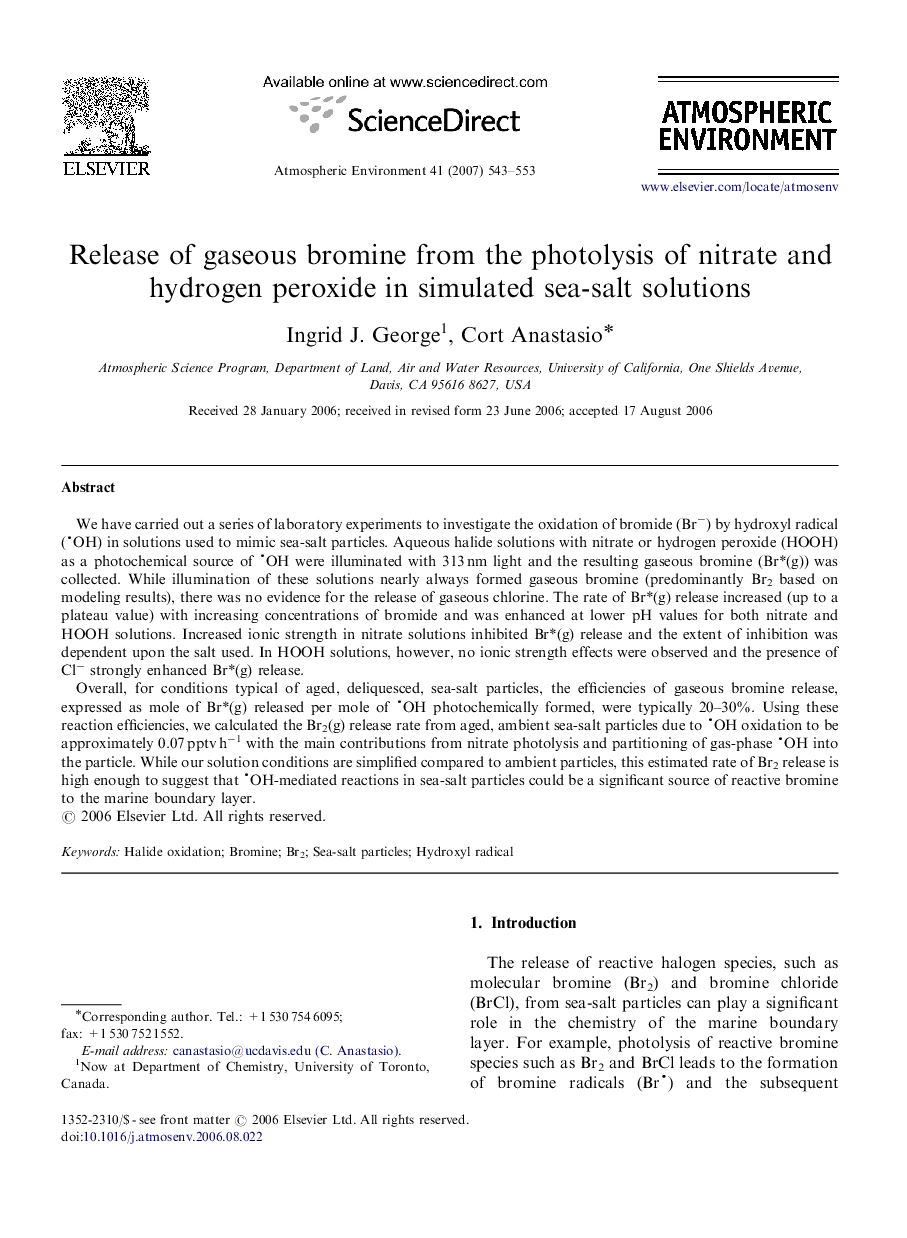| Article ID | Journal | Published Year | Pages | File Type |
|---|---|---|---|---|
| 4444318 | Atmospheric Environment | 2007 | 11 Pages |
We have carried out a series of laboratory experiments to investigate the oxidation of bromide (Br−) by hydroxyl radical (OH) in solutions used to mimic sea-salt particles. Aqueous halide solutions with nitrate or hydrogen peroxide (HOOH) as a photochemical source of OH were illuminated with 313 nm light and the resulting gaseous bromine (Br*(g)) was collected. While illumination of these solutions nearly always formed gaseous bromine (predominantly Br2 based on modeling results), there was no evidence for the release of gaseous chlorine. The rate of Br*(g) release increased (up to a plateau value) with increasing concentrations of bromide and was enhanced at lower pH values for both nitrate and HOOH solutions. Increased ionic strength in nitrate solutions inhibited Br*(g) release and the extent of inhibition was dependent upon the salt used. In HOOH solutions, however, no ionic strength effects were observed and the presence of Cl− strongly enhanced Br*(g) release.Overall, for conditions typical of aged, deliquesced, sea-salt particles, the efficiencies of gaseous bromine release, expressed as mole of Br*(g) released per mole of OH photochemically formed, were typically 20–30%. Using these reaction efficiencies, we calculated the Br2(g) release rate from aged, ambient sea-salt particles due to OH oxidation to be approximately 0.07 pptv h−1 with the main contributions from nitrate photolysis and partitioning of gas-phase OH into the particle. While our solution conditions are simplified compared to ambient particles, this estimated rate of Br2 release is high enough to suggest that OH-mediated reactions in sea-salt particles could be a significant source of reactive bromine to the marine boundary layer.
